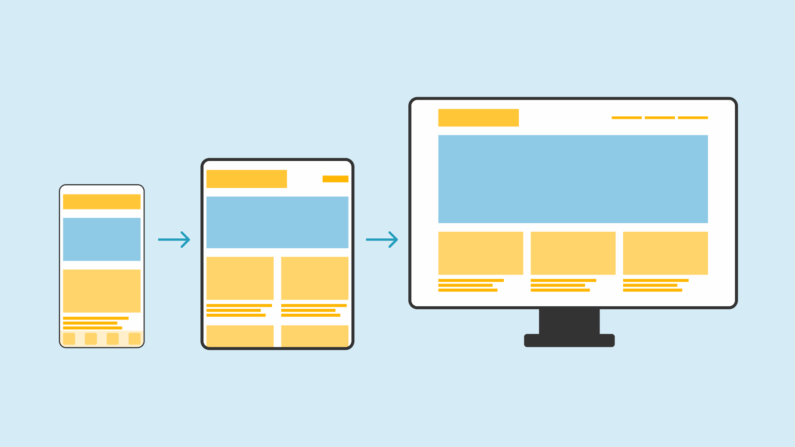You've probably already heard about user experience through the various communications from the tech giants, with Apple leading the way. You may also have seen posts on Instagram or talked to UX/UI designers. All this has created a mental image of the discipline that links it to visual work, to the creation of beautiful, relatively easy-to-use interfaces. But this image is often incomplete. The question then arises of role UX design in SEO. Gwenaël Bony, freelance UX designer, consultant and corporate trainer, presents the benefits of UX design in SEO.

What you need to know about UX design
User experience design (UX design) cannot be reduced to the design of desirable interfaces. At least if desirability is based solely on aesthetics. No, UX design is much broader and cross-disciplinary than that. What's more, the user experience begins long before the user interacts with your interface and continues long afterwards.
An umbrella business
UX design is difficult to categorise, because it is a cross-disciplinary profession. Also known as the "umbrella", it brings together and impacts on a wide range of skills and professions.
Here is a sample:
User search
User path
Accessibility
User search
This involves field studies, interviews and surveys. The aim: to understand what people are doing, why and in what context.
User path
The aim is to understand habits, behaviour and usage, and to create models and prototypes.
Accessibility
The aim is to guarantee the integrity and consistency of the quality of the experience, while taking account of disabilities, whether permanent, temporary or contextual.
What is the objective of UX design?
The aim of UX design is therefore to creating an experience which will be both quality and memorableby responding in the best possible way to customer needs. This makes the company more attractive across all its channels and points of contact. The result is better retention of customers, who then become fervent ambassadors.
Read also
UX design: why and how can you incorporate it into your business strategy?
Training
UX design and website ergonomics
Discover the key principles of ergonomics and UX design when designing or improving your website, to optimise navigation and performance.
Google, guardian of best practice and referee of search engine optimisation
The value promise of Google's search engine is to provide relevant, high-quality answers to questions asked by Internet users.
Relevance = usefulness = does it meet my needs?
Quality = usability = Do I reach my goal quickly and enjoyably?
To keep its promise, Google is forcing companies to follow a certain number of best practices through the operation of its algorithm.
While the relevance of a page is defined, among other things, by the use of keywords, forming a lexical field specific to the subject being researched, quality must meet other evaluation criteria.
Read also
Training
Do you want to ensure your website's visibility on the various search engines? Discover the training programme SEO: optimising your website referencing and learn how to master the various techniques for optimising your site's natural referencing.
Evidence of customer satisfaction
Google's traffic analysis tools enable it to track a number of measures that reflect user satisfaction.
For example, the bounce rate. This figure indicates the percentage of users who leave the page immediately, without clicking or browsing. In relation to the total number of visits, if the bounce rate is high, we can deduce that the content is not engaging or relevant to visitors. Another example is backlinksThese are quality external links that point to your site. They underline recognition of the credibility of your content through recommendations from other websites. This recommendation is proof of a bond of trust or a desire to effectively link information from different sources within the same ecosystem.
Read also
Respond to the problems of your audience, demonstrate expertise, authority and reliabilityyour credibility will be recognised and you'll become a benchmark.
Taking account of user experience and accessibility
When you look at the criteria used to validate the search engine's referencing algorithm, you'll find a great deal of consistency, which tends to prove the importance of a quality user experience. Here are some examples with the Core Web Vitals.
Mobile-first
Websites need to adapt to all screen sizes, especially mobile. With the rise of Google's mobile-first indexing, responsive UX design is crucial.
A site optimised for mobile devices improves both SEO and user experience.

Display performance or Largest Contentful Paint (LCP)
This represents the loading time for the main elements of information on the pages. This indicator reassures users about the usefulness of content by displaying the most important elements quickly.
UX design includes technical optimisation, in particular ensuring that pages load quickly.
Reactivity to interactions or Interaction to Next Paint (INP)
This indicator measures the time taken for the browser to respond to user interactions on a web page. For example, with the display of visual elements indicating any change in status or state.
Visual stability or Cumulative Layout Shift (CLS)
It quantifies the frequency with which users experience unexpected layout shifts when interface elements (ads, dynamic blocks, etc.) appear late.
A well thought-out UX design optimises these metrics, promoting better SEO ranking.
Description of images
The "alt" attribute of HTML image tags must be rigorously defined to enable screen readers for the visually impaired to transmit the information contained in the image.

Virtuous circle: the HubSpot case
A concrete example illustrates this synergy. HubSpot's UX overhaul simultaneously boosted user engagement and natural referencing, validating the holistic approach.
HubSpot is a unified customer platform that brings together marketing, sales and customer service software, powered by artificial intelligence. The website interface underwent a major UX and UI overhaul in 2016 and several iterations through 2019. The site has continued to evolve to the present day.
An in-depth analysis of the quantitative data collected over the years was carried out. This analysis was supplemented by qualitative data, including numerous user tests. This has provided crucial insights into what people do and don't do, and why.
Here are some of the findings:
- Too many users don't read the content on the home page; they don't scroll down and go straight to the rates page or the FAQ.
- High bounce rate
- Cognitive overload generated by information overload and the number of steps involved in a single action
- Translating into other languages can take up to 100 % more space.
- The quality of the code used to run the site has a negative impact on the site's display performance (display time, responsiveness).
- The site is static and not at all in tune with the development of fast-growing mobile uses
What are the consequences?
These shortcomings led to a high abandonment rate, as users did not understand the value of the product and could not find essential information on the home page. In addition, the site was not usable to the standard legitimately expected by the 19 % of the US population who live with a disability. And that's not counting temporary and situational disabilities.
All these shortcomings have had a direct impact on the referencing criteria of Google's algorithms, degrading traffic, performance and conversion indicators.
The improvements made to the site in response to these shortcomings and many others have helped to significantly improve the user experience and, as a result, satisfaction, conversion rates and the achievement of objectives. All linked together, this has boosted SEO performance.
Examples of actions taken by HubSpot:
- Code optimisation to improve performance (LCP)
- Simplified navigation using the three-click rule
- Mobile-first design to meet today's needs
Last but not least, this redesign involved integrating the site directly into the HubSpot CMS, which will be made available to the public in 2018. The care taken to improve the site's UX is offered to customers to guarantee up-to-date technical quality and reduce errors.

SEO and UX design share a common objective: to offer users interfaces that are clear, fast and tailored to their needs. The example of HubSpot, which has considerably improved its SEO performance, illustrates this synergy. Yet these results were achieved even before the Core Web Vitals were integrated into Google's algorithm in 2021.
Today, with criteria such as loading speed (LCP), responsiveness (INP) and visual stability (CLS), UX design has become an even more strategic lever for optimising natural referencing. By having a direct impact on user satisfaction and technical performance, it has become a priority for all businesses, whether start-ups, SMEs or large organisations.
Investing in UX design means not only improving search engine positioning, but also accelerating growth and remaining competitive in a demanding digital environment.





